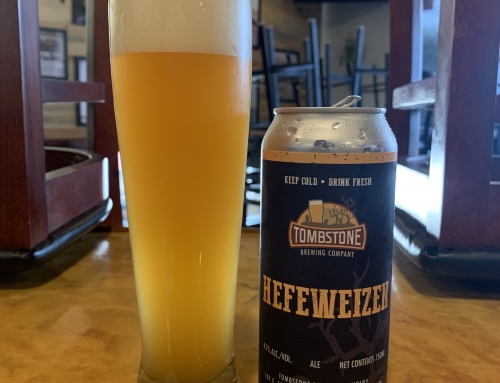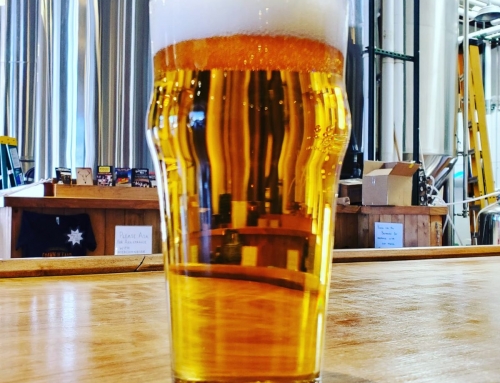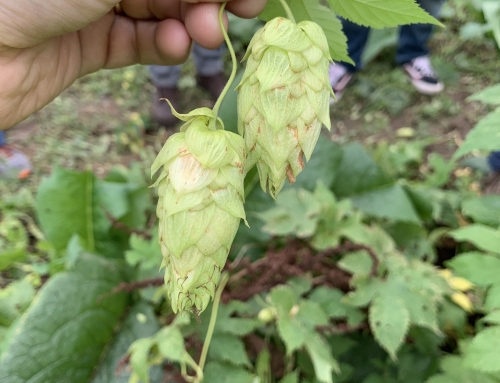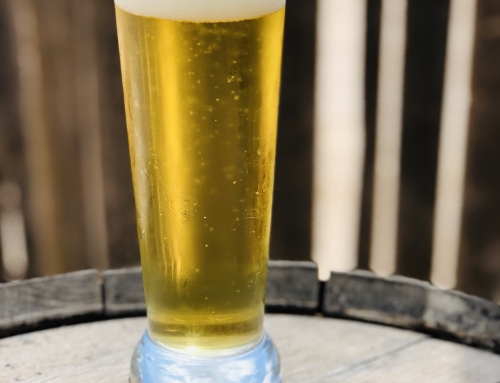I think that every serious craft beer drinker gets to a point when they feel a lull in their drinking experiences and nothing seems to wow them anymore. Nothing seems hoppy enough, every hyped bourbon barrel stout just tastes boozy and muddled, and every exciting sour beer just tastes like the brewery dumped acetic acid into the fermenter, added fruit and called it a day. The usual advice for curing palate fatigue like this is to go back to drinking session beers, pilseners, or styles you normally don’t drink on a regular basis until your senses come back to you. Unfortunately, when you’re a brewer and you’re constantly having to brew and taste your beers, it can be hard to come by a break. You either deal with the disappointment of palate fatigue, or you push your beer to the next level of extreme. That’s how beers like “Most Hops” are born… And even then when you drink it the thought is still “That’s not as intense as I expected. I’ll have to figure out how to do more.” Matt is frequently telling me that I’ve gotten myself into an arms race with no one when we talk about this phenomenon.
A few years ago, I was in the middle of about a year long stretch where no beer was exciting to me. Brewing was turning into a job rather than a passion and I wasn’t feeling very inspired by much of anything. While I was brewing at Blue Pants, our Tennessee sales manager requested that my assistant brewer and I go to a small beer fest in Memphis: Cooper Young’s Beer Fest. I have never been the type of person to get excited about festivals, but this was a good opportunity for the brewers to get out and meet the people that sell our beer and develop relationships. I reluctantly agreed to go and it was at this fest that I had a beer that would change my perception about what beer could be.
The beer came from an unlikely source. After walking around and trying various beers and feeling like I’d had all of the exact same tasting experiences at every beer fest I’d ever attended, I saw a strange beer name on the board at a booth: “Brett… Not Sour” from Yazoo Brewing Company. It was very direct and to the point. Brettanomyces is a species of yeast, not bacteria and as such it doesn’t make a beer sour as is commonly claimed. I gave it a try and I was floored by the flavor combinations, complexity, and drink-ability of that beer. I spent the rest of the afternoon walking between our booth and the Yazoo booth getting more samples of the same beer… Forget the festival and the hundreds of beers on tap. That was the one for me. Every glass I drank of it was better than the last. It had a huge tropical fruit aroma, intense mango flavor, lots of tangerine, some pineapple, it was dry and just incredible.
After drinking that beer, I began to realize that the way the beer community thinks of Brettanomyces is just flawed. For most beer enthusiasts, if you ask them what flavor you get from Brett, they’ll use descriptors like “horse blanket” or “Leather.” Sometimes people just use “Funky” and occasionally “Cherry Pie.” Those are all fine descriptions for flavors that Brett can lend to a beer, but that is really just the tip of the iceberg. There are new Brett yeast strains being discovered constantly and despite huge steps forward in the studies of Brett in recent years, there are still a lot of unknowns.
After that day in Memphis, I started playing with different types of Brett fermentations myself and spent a lot of time researching ways that Brett can be used. It has now been almost 15 years since the first beers credited as being fermented completely with Brett were brewed by Russian River, Lost Abbey, and New Belgium. In that time, Brett fermentation still hasn’t evolved much commercially whereas most brewers still think of Brett as a long term yeast used mostly for secondary and aging. During my research and development, I ended up working with a yeast lab to develop a blend of Brett strains that hits on a lot of flavors that are highly desirable for IPA breweries, but typically to get those flavors, brewers use hops. The blend is notable for its intense pineapple, peach, nectarine, and even watermelon flavors. Brewing Brett beers like that is one of the most fun things for me to do in the brewery.
In fact, when Matt and I had our first meetings during my interviews for the brewmaster position in Tombstone, a large part of our discussions revolved around the importance of brewing the next trendy styles. At one point in the conversation, I said “Screw it… If that’s what we want to do, let’s just do an all Brett brewery with Brett IPA’s and fruited Brett beers.” I think there was about a week long period where the idea was seriously considered, but I think that we determined that the time wasn’t quite right for that type of plan, especially with the brewery’s location in Tombstone and our reliance on selling beer on site to tourists and locals. If Arizona wasn’t ready for it then, get ready now because it is coming.
With the addition of our temperature controlled Brett facility, we can safely keep the funky yeast away from our clean strains and have the best of both worlds. This week we will be brewing our first all Brett beers to be available on a large scale. We will have four fermenters where we will be able to split batches into different variants. The first batches will be IPA’s with two fermenters being filled from one batch and dry hopped differently. The other two fermenters will be filled with a historical style, Dortmunder Adambier, with one of them being fermented with cherry wood and finished with cherry fruit, and the other being left as the base beer to be aged in oak barrels for six months to a year as would be normal for the style hundreds of years ago.
One of the cool things about doing Brett fermented IPA’s is that the beer will evolve rapidly over the course of the first year in bottles. When fresh, the beer will feature the intense peach, pineapple, and mango flavors that the Brett provides as well as the intense hoppy aromas that we’ve become known for with our selected lots of hops. Brett is very good at scavenging micro oxidation, so the hop flavors will persist for a longer period of time than you would expect to find in our NEIPA’s. After about three months in bottles, the pineapple flavor will develop more along with a subtle cherry flavor. The beer should never really get phenolic or spicy with this yeast blend, but will only alter the types of fruity esters over the course of a year. Eventually, years down the line the beer will develop some of the classic funky horsey qualities that are commonly associated with Brett, but not in a very intense manner like you would find in a beer that is fermented with Saccharomyces and aged with Brett. Beers fermented with Brett are typically perceived as being less bitter than the same wort fermented with Saccharomyces which is a quality that our NEIPA drinkers will be able to relate to easily. Since Brett does not produce glycogens like our NEIPA yeast strain does, we will be adding a large percentage of oats to keep the mouthfeel full, although the beer will be very dry like you expect in an old school West Coast IPA. Unlike our NEIPA’s, I would recommend hoarding bottles, drinking a few fresh, and aging a few, trying them every couple months to watch the beer change.
The Dortmunder Adambier is a style that I wouldn’t expect many people to have heard of. In fact, when I’ve talked about the style to some beer enthusiasts before they try to correct me like I’m a moron that calls Altbier by the wrong name. Perhaps the most well known example is Hair of The Dog’s “Adam.” This will be my second attempt at an Adambier after my first attempt won a silver medal at GABF and a bronze medal at World Beer Cup a few years ago. Adambier is a style that is considered to be extinct that originated in Dortmunder. The style was a high ABV beer that would almost certainly have been contaminated with Brett when it was aged in barrels for a year before consuming. One of the notable characteristics of the Adambier style is the lightly smoky flavor that would historically have come from malting grains over a beechwood fire. We will be using a moderate amount of beechwood smoked malt to achieve the same effect. Instead of an incidental Brett contamination, this beer will be co-fermented with a Saccharomyces strain similar to a Kolsch strain and Brett Lambicus. The Lambicus will continue to develop the classic Brett funk along with cherry pie over the course of many years. The version fermented with cherry wood and fruit will be best fresh, but could develop some interesting flavors with long term aging in the bottle. The version that is aged in oak will be available whenever the beer tells us it’s ready which could be anywhere from six months to a year down the line and will be an excellent candidate for even more long term aging if maximum funkiness is what you desire.





Leave A Comment